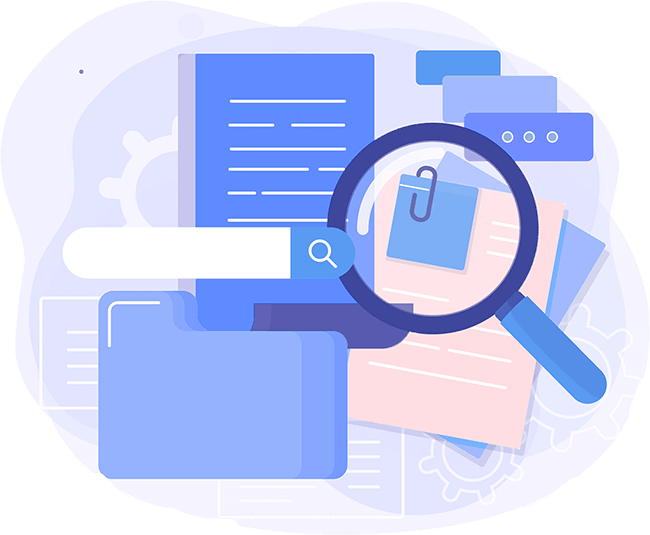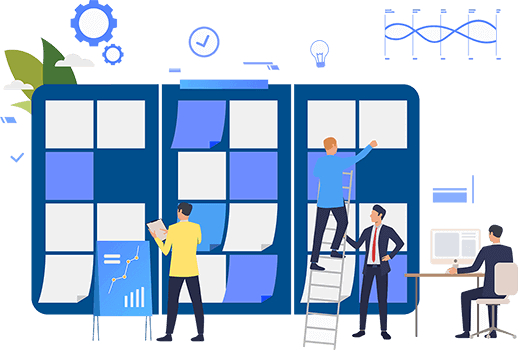SUMMARY
Don't use plagiarized sources. Get Your Custom Essay on
Flight Control System: Aircraft System & Integrations
Just from $13/Page
Flight Control System
The flight control system consists of flight control surfaces, cockpit controls, hinges and the necessary mechanical mechanisms to control the flight of an aircraft. The cockpit controls are typically in the form of a control stick that controls the roll and pitch of the aircraft by manipulating the ailerons and elevators; A rudder pedal that controls the yaw of aircraft.
Flight control system shall:
– Provide rotational control about all axis
– Provide force in a single axis
– Provide assistance to the pilot, where required
– Provide a realistic “feel” to the flight
– Provide safe handling
INTRODUCTION
There are two primary prerequisites for safe flight are stability and controllability.
Flight stability is defined as the inherent tendency of an aircraft to oppose any input and return to the trim condition if disturbed. It means that an aircraft is in trim or equilibrium when the summation of all forces along each of the three axes and equal to zero. However, the aircraft will remain a constant linear speed and/or a constant angular speed. Control is a desired change in the aircraft trim condition from an initial trim point to a new trim point with a specified rate. The desired change is basically expressed with allusion to the time that it takes to move from the initial trim point to the final trim point (pitch rate and roll rate).
The scope of this system requirement analysis included the Flight Control System studies, its requirement analysis, trade-offs (comparations) and main concept of system design.
STUDY GUIDELINES
Control Surfaces
In an aircraft, there are two main types of surfaces: 1. Lifting surface and 2. Control surfaces. Lifting surface are to generate aerodynamic lift forces. In a conventional aircraft, lifting surfaces primarily include the wing, horizontal tail and vertical tail. Principally, control surfaces shall classify into two types: conventional and non-conventional. Conventional control surfaces are divided into two main group: Primary control surfaces and Secondary control surfaces.
Autopilot System
An autopilot is a system used to control the trajectory of a vehicle without constant ‘hands-on’ control by a human operator being required. Autopilots do not replace a human operator, but assist them in controlling the vehicle, allowing them to focus on broader aspects of operation, such as monitoring the trajectory, weather and systems.
REQUIREMENT ANALYSIS
The flight control system shall ensure the stability and controllability of the aircraft, improve the ability to complete missions and flight quality, enhance flight safety and reduce the burden on the pilot.
Stability requirements
There are three types stability in one aircraft: Positive stability, Negative stability and Neutral stability. The stability is ability of the aircraft to recover from the original state by its own characteristics without accidental intervention by the external force during flight. There is a very close relationship between the static and dynamic stability of the aircraft. In general, as long as the size of the static stability is properly selected, good dynamic stability characteristics can be ensured.
Horizontal tail and vertical tail are the main components that flight stability needed.
– Horizontal stabilizer
The function of the stabilizer is to make the aircraft have appropriate static stability, which can make the aircraft have static stability in the pitch direction (e.g. the aircraft is raised or lowered). The horizontal stabilizer is the fixed airfoil portion of the horizontal tail. When the aircraft is flying horizontally, the horizontal stabilizer will not generate additional torque to the aircraft; When the aircraft is disturbed and raised, the aerodynamic force acting on the horizontal stabilizer will generate a moment to lower the aircraft and restore the aircraft to horizontal flight attitude. Likewise, if the aircraft heads down, the torque generated by the horizontal stabilizer will cause the aircraft to rise until it resumes horizontal flight.
– Elevator
Elevator is a steerable aerofoil section of the horizontal tail that acts to pitch the aircraft. When the aircraft is required to head up and fly upwards, the driver will manipulate the elevator to deflect upwards. At this time, the aerodynamic force received by the elevator will generate a head-up torque, and the aircraft will look up. Conversely, if the driver manipulates the elevator to deflect downwards, the airplane will head down under the action of aerodynamic torque.
– Vertical stabilizer
The vertical stabilizer is the portion of the fixed airfoil in the vertical tail. The role of the vertical stabilizer shall provide lateral static stability and lateral damping torque to given lateral dynamic stability of the aircraft.
– Rudder
Rudder is the steerable airfoil section of the vertical tail that acts to yaw the aircraft.
Controllability requirements
Main control surfaces are required for the safety and controllable of the aircraft.
– Primary control surfaces
Primary control surfaces shall provide control about one of the three primary axes of roll, pitch and yaw. These are usually the ailerons for control in roll, the elevators for control in pitch and the rudder for control in yaw. Ailerons are mounted on the outboard trailing edge of the wings and move differentially when deflected. Elevators are hinged to the trailing edge of the horizontal tail surfaces. Rudder is hinged to the trailing edge of the vertical stabilizer or fin. 5
– Secondary control surfaces
Secondary control surfaces shall employ to reinforce primary control surface for minor or less important function. Spoilers (or airbrakes) used to disrupt airflow over the wing and greatly increase the amount of drag. Flaps mounted on the inboard section of each wing (near the wing roots). They are deflected to artificially increase the wing camber. Slats are extensions to the front of a wing for similar tasks as flaps.
– Principal of control surfaces
In all cases the degree of movement of the control surfaces is directly proportional to the degree of movement of the pilot’s control. It allows the pilot to balance the lift and drag being produced by the wings and control surfaces over a wide range of load and airspeed. The goal is to reduce the effort required to adjust or maintain a desired flight attitude.
The requirements for flight control surfaces vary greatly between one aircraft and another, depending upon the role, range and agility needs of the vehicle.
Comparations
Mechanical Control System
In general, the Mechanical control system is the most basic flight control system that commonly used on early aircraft and modern small aircraft where aerodynamics is not strong. The artificial ‘feel’ shall enhances flight safety when pilot uses mechanical flight control system.
Advantages:
– Commonly used on aircraft
– Components in system are easy to identify and repair
Disadvantages:
– More moveable components, more maintenance
– High maintenance cost
– Does not apply an assist system if the pilot’s action is not directly sufficient for the control
Hydraulic-Mechanical Control System
The hydraulic flight control system consists of two parts: Mechanical circuit and Hydraulic circuit. Pilot’s maneuvering action is transmitted through the mechanical circuit to the hydraulic circuit with corresponding servo valve, then the hydraulic pump drives the actuator to operate the various control surfaces of the aircraft.
Advantages:
– Reduced size of the system component by using fluid
– Mechanical rigidity
– High response speed during maneuvering
Disadvantages
– Easy to leak fluid and affect its efficiency
– Fluid is flammable and has the risk of explosion
– Not accurate and convenient as electronic devices
Fly-By-Wire System
Fly-by-wire (FBW) is a system that replaces the conventional manual flight controls of an aircraft with an electronic interface.
Advantages:
– Relaxation of static stability
– Improve aircraft flight quality
– Easy combination of automatic flight and landing systems
– Reduce weight of aircraft
Disadvantages:
– Low reliability of the single-channel system
– High cost
– Susceptible to lighting strikes and electromagnetic pulse interference
CONCEPTUAL SYSTEM DESIGN
Compared to Mechanical, Hydro-mechanical and Fly-By-Wire flight control systems, the ‘best-fit’ system is Fly-By-Wire flight control system.
A typical fly-by-wire system consists of a sensor set (a variety of gyro, accelerometers and other atmospheric measurement devices such as inertial measurement devices and angle of attack sensors), input devices, flight control computers, steering gears, and electrical transmission lines. The fly-by-wire system is generally classified according to the electrical characteristics of the components. A system using analog sensors, analog computers, and input and output devices is called an analog fly-by-wire system; a digital sensor, a digital computer, and an input/output device are called an all-digital fly-by-wire system. In fact, it is now a semi-digital fly-by-wire system that uses analog sensors and digital computers. Since the system has no mechanical passage, the structure is simple, the volume is small, the weight is light, and there is no nonlinear adverse effect such as friction, gap, hysteresis of the mechanical transmission device, and the handling quality of the aircraft can be significantly improved. Due to the absence of mechanical access, the reliability of the flight control system is very high. At present, the main measure for improving the reliability of general telex control systems is to use a redundancy backup system. The main sensor and flight control computer must have several identical systems that work simultaneously, with a dedicated redundancy management computer for the final output. Generally, modern telex control systems are four-degree system, and there are also a few three degrees. Taking the four-degree system as an example, the system is composed of four identical single-channel fly-by-wire control systems to ensure that the reliability is not lower than the mechanical control system. The four independent channels receive the driver’s command input signal from the four-degree force sensor to detect the signal provided by the four-degree sensor of the aircraft motion. The flight control computer separately processes the data for each of the four channels, so that each channel outputs a control signal to each. Rudder circuit. The outputs of the four rudder circuits collectively operate a booster to deflect the rudder surface and operate the aircraft for corresponding motion. In this process, the signals of the four channels are continuously compared and monitored by the monitor or computer, the fault signal is isolated, and a correct signal is output to ensure that the signal is completely correct.
Find Out How UKEssays.com Can Help You!
Our academic experts are ready and waiting to assist with any writing project you may have. From simple essay plans, through to full dissertations, you can guarantee we have a service perfectly matched to your needs.
View our services
However, the main concern with the Fly-By-wire system is the reliability issue. Traditional mechanical or hydraulic operating systems typically fail gradually, and failure of all flight control computers can cause the aircraft to be immediately uncontrollable. Therefore, most fly-by-wire systems include redundant computers and some mechanical or hydraulic backups. This seems to make some of the advantages of the fly-by-wire system meaningless, but since redundant systems are only used in emergencies, these systems can be made simpler, lighter, and require only limited capabilities.
REFERENCES
[1] Moir I. & Seabridge A. (2001) Aircraft Systems: Mechanical, electrical and avionics systems integration (2nd Ed.)
[2] Chavarria, M. (2012)] Aircraft Controls
[3] by Collinson RPG (2011) Introduction to Avionics Systems (3rd Ed.)
[4] https://en.wikipedia.org/wiki/Autopilot
[5] U4AE408 Aircraft Systems and Instrumentation Vel Tech course materials
[6] NASA Systems Engineering Handbook 2007, Appendix C, How to Write a Good Requirement
[7] Mohammed H. Sadraey (2013) Chapter 12, Aircraft Design A System Engineering Approach
[8] En.wikipedia.org. (2019). Autopilot. [online] [Accessed 17 May 2019]. <https://en.wikipedia.org/wiki/Autopilot>







